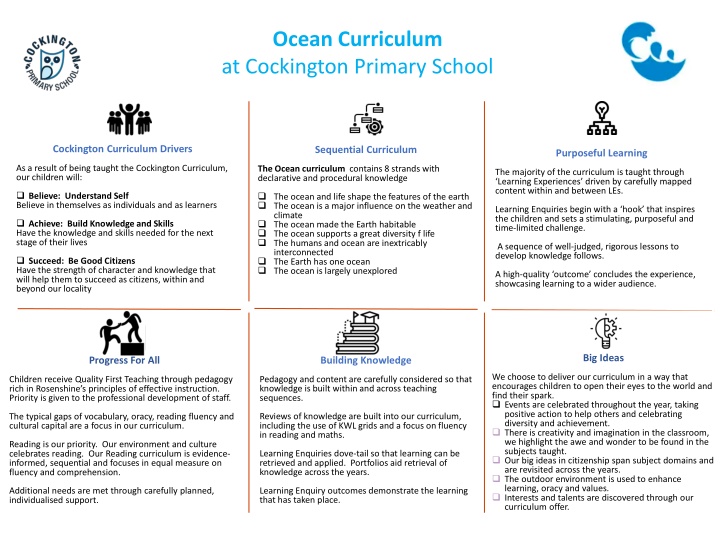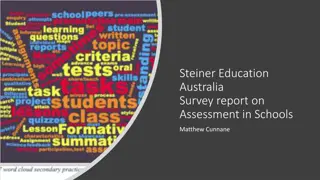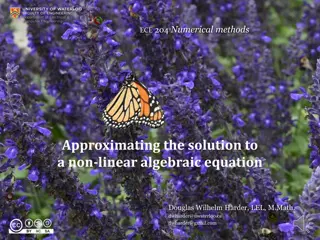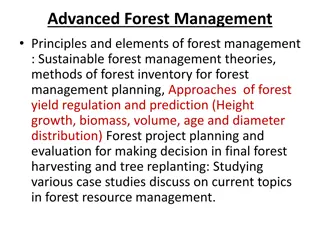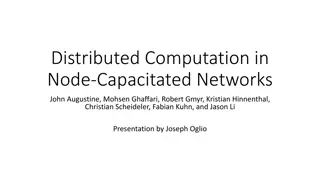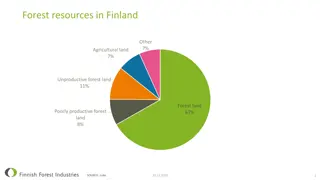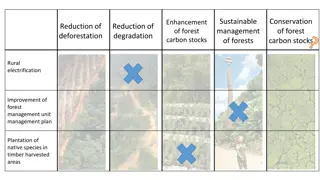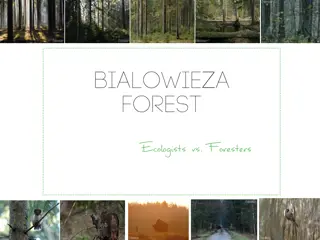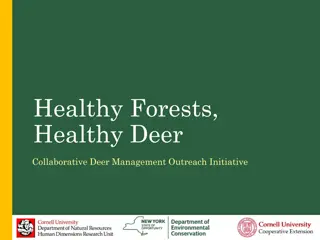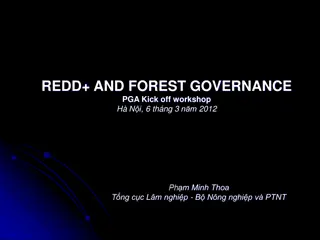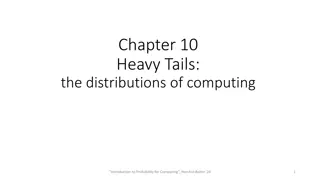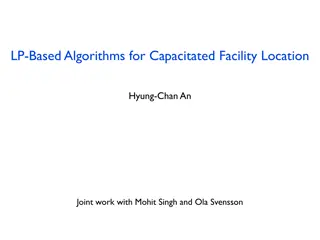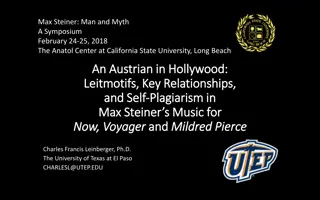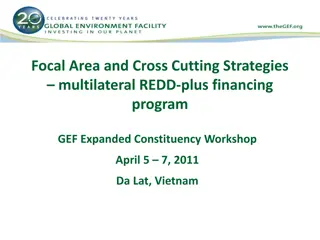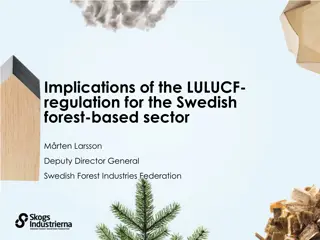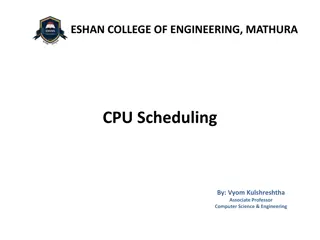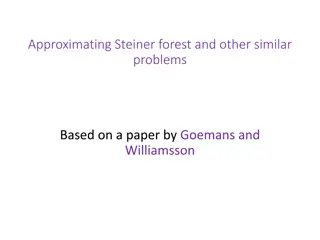Approximating the k-Steiner Forest and Capacitated non-preemptive Dial-a-Ride Problems
In this study, approximations for the k-Steiner Forest and Capacitated non-preemptive Dial-a-Ride Problems are explored, discussing their relatedness and complexities. Various algorithms and solutions are presented by researchers to address these combinatorial optimization problems efficiently.
Uploaded on Mar 17, 2025 | 0 Views
Download Presentation

Please find below an Image/Link to download the presentation.
The content on the website is provided AS IS for your information and personal use only. It may not be sold, licensed, or shared on other websites without obtaining consent from the author.If you encounter any issues during the download, it is possible that the publisher has removed the file from their server.
You are allowed to download the files provided on this website for personal or commercial use, subject to the condition that they are used lawfully. All files are the property of their respective owners.
The content on the website is provided AS IS for your information and personal use only. It may not be sold, licensed, or shared on other websites without obtaining consent from the author.
E N D
Presentation Transcript
Ocean Curriculum at Cockington Primary School Cockington Curriculum Drivers Sequential Curriculum Purposeful Learning As a result of being taught the Cockington Curriculum, our children will: The Ocean curriculum contains 8 strands with declarative and procedural knowledge The majority of the curriculum is taught through Learning Experiences driven by carefully mapped content within and between LEs. Believe: Understand Self Believe in themselves as individuals and as learners The ocean and life shape the features of the earth The ocean is a major influence on the weather and climate The ocean made the Earth habitable The ocean supports a great diversity f life The humans and ocean are inextricably interconnected The Earth has one ocean The ocean is largely unexplored Learning Enquiries begin with a hook that inspires the children and sets a stimulating, purposeful and time-limited challenge. Achieve: Build Knowledge and Skills Have the knowledge and skills needed for the next stage of their lives A sequence of well-judged, rigorous lessons to develop knowledge follows. Succeed: Be Good Citizens Have the strength of character and knowledge that will help them to succeed as citizens, within and beyond our locality A high-quality outcome concludes the experience, showcasing learning to a wider audience. Big Ideas Building Knowledge Progress For All We choose to deliver our curriculum in a way that encourages children to open their eyes to the world and find their spark. Events are celebrated throughout the year, taking positive action to help others and celebrating diversity and achievement. There is creativity and imagination in the classroom, we highlight the awe and wonder to be found in the subjects taught. Our big ideas in citizenship span subject domains and are revisited across the years. The outdoor environment is used to enhance learning, oracy and values. Interests and talents are discovered through our curriculum offer. Pedagogy and content are carefully considered so that knowledge is built within and across teaching sequences. Children receive Quality First Teaching through pedagogy rich in Rosenshine s principles of effective instruction. Priority is given to the professional development of staff. Reviews of knowledge are built into our curriculum, including the use of KWL grids and a focus on fluency in reading and maths. The typical gaps of vocabulary, oracy, reading fluency and cultural capital are a focus in our curriculum. Reading is our priority. Our environment and culture celebrates reading. Our Reading curriculum is evidence- informed, sequential and focuses in equal measure on fluency and comprehension. Learning Enquiries dove-tail so that learning can be retrieved and applied. Portfolios aid retrieval of knowledge across the years. Learning Enquiry outcomes demonstrate the learning that has taken place. Additional needs are met through carefully planned, individualised support.
Ocean Curriculum at Cockington Primary School Intent Intent The OCC provides pupils across our Connect family of schools a wonderful opportunity to learn about the sea. They discover how the ocean has shaped our planet, why it s essential to all life on Earth, and how it needs to be protected for the future. This curriculum, the first of its kind in the UK, is a partnership with a number of leading organisations, including the Ocean Conservation Trust, Marine Biological Association and the Plymouth Marine Laboratory. It provides not only an inspiring journey of discovery but also a focal point to develop learning in science, ecology, maths and literacy.
Ocean Principles Ocean Principles 1 The Earth has one big ocean with many features 2 The ocean and life in the ocean shape the features of the Earth 3 The ocean is a major influence on weather and climate 4. The ocean made the Earth habitable 5. The ocean supports a great diversity of life and ecosystems 6. The ocean and humans are inextricably interconnected 7. The ocean is largely unexplored
Ocean Curriculum at Cockington Primary School - LTP Autumn Autumn 2 Spring 1 Spring 2 Summer 1 Summer 2 The snail and the whale Location and comparison Study trip to the beach Living things study (science) Recep tion A. Local weather, including precipitation, fog and wind, can be caused by the ocean no matter where you live. A1. Most precipitation on Earth comes from water that evaporated from the ocean. A2. When water evaporates and condenses, clouds form, which can lead to precipitation. A3. Most of the water in lakes, ponds, rivers and the ground comes from water that evaporated from the ocean and fell to the land as precipitation. A4. Most of the water from land and in the atmosphere eventually returns to the ocean as run off from rivers or precipitation. Year 1 Living things Diversity of Life B. The ocean provides most of the Earth s living space and supports a great diversity of life from the surface, through the water column, and down to the sea floor. B6 There are many groups or organisms that occur in the ocean that do not occur on land or in fresh water, such as sea stars, squid, jellyfish, corals, many types of worms and seaweeds. B7 The ocean supports a tremendous variety of sizes or organisms from extremely small to the largest animal ever to live on Earth. B8 Most of the organisms in the ocean are microscopic. Photosynthetic microbes are the most abundant forms of life in the ocean. Beach visit Create a rockpool spotter's guide. A there is a great diversity of organisms in the ocean. A1 More different kinds of organisms are found in the ocean than on land. A2 many groups of organisms exist only in the ocean A3 Ocean life ranges in size from the tiniest organisms to the largest animal on Earth. A4. Ocean organisms have a variety of different structures and behaviors that help them to survive in the ocean. Diversity of ecosystems B the ocean holds a great diversity of unique environments and habitats where organisms live Year 2 Oxygen production B. Most of the oxygen in the atmosphere originally came from the activities of photosynthetic organisms in the ocean. B1: Some organisms on land and in the ocean use carbon dioxide, water and sunlight to make their own food. This process is called photosynthesis, and it releases oxygen. Comparison study rocks Many rocks found on land were formed in the ocean. Some rocks found on land were formed from compacted ocean sediments. Sediment is made up of materials that sink to the bottom of the ocean which may include the shells of dead ocean organisms. Dead organisms that fall into ocean sediments may become fossils Some rocks found on land were formed in the ocean by underwater volcanic activity. Comparison study rocks Many rocks found on land were formed in the ocean. Some rocks found on land were formed from compacted ocean sediments. Sediment is made up of materials that sink to the bottom of the ocean which may include the shells of dead ocean organisms. Dead organisms that fall into ocean sediments may become fossils Some rocks found on land were formed in the ocean by underwater volcanic activity. Year 3 Diversity of Life B. The ocean provides most of the Earth s living space and supports a great diversity of life from the surface, through the water column, and down to the sea floor. Local Stream Study visit to local stream/river The ocean is an integral part of the water cycle. Solar energy absorbed by the ocean drives the water cycle. Solar energy warms water in the ocean Year 4
Ocean Curriculum at Cockington Primary School LTP Unit Type Taught Vocabulary Principle 2 3 4 5 6 The ocean and life in the ocean shape the features of Earth. The ocean is a major influence on weather and climate. The ocean made the Earth habitable. The ocean supports a great diversity of life and ecosystems. The ocean and humans are inextricably interconnected. XC Living things - Octonaughts 'Seagrass Dreams'. A.There is a great diversity of organisms in the ocean A3. Ocean life ranges in size from the tiniest organisms to the largest animals on Earth. B.The ocean holds a great diversity of unique environments and habitats where organisms live B1. There are distinct and unique ocean habitats throughout the ocean and on the coast, off shore, in the deep ocean and at the surface Erosion and Changing Coastlines A. Moving water can cause coastal build up and erosion, carrying earth materials from one place to another and shaping the shoreline. A1. Shorelines are built up by earth materials brought to the shore by rivers and waves. A2. Some earth materials from the ocean such as sand, shells, corals and rocks are carried to the shore by waves. A3. Some earth materials from the land such as rocks, sand and soils are carried to the shore by rivers. A. Local weather, including precipitation, fog and wind, can be caused by the ocean no matter where you live. A1. Most precipitation on Earth comes from water that evaporated from the ocean. A2. When water evaporates and condenses, clouds form, which can lead to precipitation. DD Location and comparison st udy EYFS
Ocean Curriculum at Cockington Primary School LTP Unit Type Taught Vocabulary Principle 2 The ocean and life in the ocean shape the features of Earth. 3 4 5 6 The ocean is a major influence on weather and climate. The ocean made the Earth habitable. The ocean supports a great diversity of life and ecosystems. The ocean and humans are inextricably interconnected. XC Comparison study A. Local weather, including precipitation, fog and wind, can be caused by the ocean no matter where you live. A1. Most precipitation on Earth comes from water that evaporated from the ocean. A2. When water evaporates and condenses, clouds form, which can lead to precipitation. A3. Most of the water in lakes, ponds, rivers and the ground comes from water that evaporated from the ocean and fell to the land as precipitation. A4. Most of the water from land and in the atmosphere eventually returns to the ocean as run off from rivers or precipitation. Y1
Ocean Curriculum at Cockington Primary School LTP Unit Type Taught Vocabulary Principle 2 The ocean and life in the ocean shape the features of Earth. 3 4 5 6 The ocean is a major influence on weather and climate. The ocean made the Earth habitable. The ocean supports a great diversity of life and ecosystems. The ocean and humans are inextricably interconnected. Local Study Diversity of Life A. There is a great diversity of organisms in the ocean. A1. More different kinds of organisms are found in the ocean than on land A2. Many groups of organisms exist only in the ocean. A3. Ocean life ranges in size from the tiniest organisms to the largest animal on Earth. A4. Ocean organisms have a variety of different structures and behaviours that help them to survive in the ocean. Beach visit to study rock pools (or virtual tour) Create rock pool spotter s guides and provide tours to visitors as they ramble along a collaboratively painted rock pool. Y2 Diversity of Ecosystems B. The ocean holds a great diversity of unique environments and habitats where organisms live. B1. There are distinct and unique ocean habitats throughout the ocean and on the coast, off shore, in the deep ocean, and in the surface. B2. Organisms living in the different kinds of places in the ocean have different adaptations in structure and behaviour, which help them to survive in their habitat, e.g., to find and capture prey. Life as we know it does not exist without water. Almost all the water on Earth is in the ocean. XC Living things study
Ocean Curriculum at Cockington Primary School LTP Unit Type Taught Vocabulary Principle 2 3 4 5 6 The ocean and life in the ocean shape the features of Earth. The ocean is a major influence on weather and climate. The ocean made the Earth habitable. The ocean supports a great diversity of life and ecosystems. The ocean and humans are inextricably interconnected. Erosion and Changing Coastlines A. Moving water can cause coastal build up and erosion, carrying earth materials from one place to another and shaping the shoreline. A4. Erosion is the wearing away of rocks, soil, shells and other earth materials and features. A5. Waves can break down and wear away cliffs, beaches and materials brought to the shore, changing the shape of the shoreline. A6. Rocks, shells, corals, plants and other materials can be broken down into sand. Rock Cycle A. Many rocks found on land were formed in the ocean. A1. Some rocks found on land were formed from compacted ocean sediments. A2. Sediment is made up of materials that sink to the bottom of the ocean which may include the shells of dead ocean organisms. A3. Dead organisms that fall into ocean sediments may become fossils. A4. Marine fossils can be found on land in places that used to be covered by the ocean (e.g. the Rocky Mountains). A5. Some rocks found on land were formed in the ocean by underwater volcanic activity. XC Comparison Study Y3 Oxygen production B. Most of the oxygen in the atmosphere originally came from the activities of photosynthetic organisms in the ocean. B1: Some organisms on land and in the ocean use carbon dioxide, water and sunlight to make their own food. This process is called photosynthesis, and it releases oxygen. DD Investigating oxygen production from pondweed
Ocean Curriculum at Cockington Primary School LTP Unit Type Taught Vocabulary Principle 2 The ocean and life in the ocean shape the features of Earth. 3 4 5 6 The ocean is a major influence on weather and climate. The ocean made the Earth habitable. The ocean supports a great diversity of life and ecosystems. The ocean and humans are inextricably interconnected. Diversity of Ecosystem A. The ocean supports a great diversity of interconnected and interdependent ecosystems, each defined by the interaction of the physical environment and the community of organisms living there. A1 Coastal ocean ecosystems, (e.g., rocky seashores, kelp forests and surface waters around the Artic and Antarctic) that support the most life are mainly located in sunlit areas where the water is cold and nutrient-rich. A2 Phytoplankton, the base of most ocean food webs, flourish in coastal surface waters where there are plenty of nutrients and sunlight. A3 Estuaries shallow coastal ecosystems where fresh water from rivers mixes with salt water from the ocean are important nursery grounds for many different ocean organisms. A4 Coral reefs are productive ecosystems found in clear, warm, nutrient-poor, tropical water. Algae living inside the coral provide them with some of the nutrients they need to survive. Diversity of Life B. The ocean provides most of the Earth s living space and supports a great diversity of life from the surface, through the water column, and down to the sea floor. B6 There are many groups or organisms that occur in the ocean that do not occur on land or in fresh water, such as sea stars, squid, jellyfish, corals, many types of worms and seaweeds. B7 The ocean supports a tremendous variety of sizes or organisms from extremely small to the largest animal ever to live on Earth. B8 Most of the organisms in the ocean are microscopic. Photosynthetic microbes are the most abundant forms of life in the ocean. DD Living things and their habitats Y4 *B. The ocean is an integral part of the water cycle. Solar energy absorbed by the ocean drives the water cycle. B1. Solar energy warms water in the ocean and causes it to evaporate. Most water in the air comes from the ocean. B2. Water in the air eventually cools, condenses into clouds and returns to the ocean or the land as precipitation. B3. Most of the water on land returns to the ocean through river runoff B4. Most of the fresh water on Earth comes from water that evaporated from the tropical ocean. XC Local study Visit to local river
Ocean Curriculum at Cockington Primary School LTP Unit Type Taught Vocabulary Principle 2 The ocean and life in the ocean shape the features of Earth. 3 4 5 6 The ocean is a major influence on weather and climate. The ocean made the Earth habitable. The ocean supports a great diversity of life and ecosystems. The ocean and humans are inextricably interconnected. *Uses of the Ocean A.The ocean provides basic support for all life, including human life. A1. The ocean is an important source of food for humans. A2. Food from the ocean includes organisms such as fish, crab and oysters, as well as prepared products that contain organisms, such as algae. A3. The fresh water that humans need is formed as part of the water cycle when water evaporates from the ocean and returns to land as rain. A4. Humans use the ocean as a source for minerals, energy resources and medicines. A5. Most of the oxygen humans breath comes from photosynthetic organisms that live in the ocean. DD Local Study Comparing the oxygen production by the major rainforests and the ocean *f Ecosystem A. The ocean supports a great diversity of interconnected and interdependent ecosystems, each defined by the interaction of the physical environment and the community of organisms living there. A5 The open ocean ecosystem consists of the surface, mid-water and deep parts of the ocean away from the coast and sea floor bottom. Each of these areas is made up of entirely different physical characteristics and diverse communities of organisms. A6 The sunlit surface layers of the ocean are where the sun s energy is captured by photosynthetic phytoplankton (algae and bacteria). This layer only extends down about 200 meters. A7 The middle ocean layers are important living spaces for many organisms, such as large fish and jellyfish. There is not enough light to support photosynthesis here. This zone extends from 200 meters down to 1000 meters. A8 Deep water ecosystems below 1000 meters are in complete darkness and under extreme pressure. A9 There are deep ocean ecosystems that are independent of energy from sunlight and photosynthetic organisms. Diversity of Life B. The ocean provides most of the Earth s living space and supports a great diversity of life from the surface, through the water column, and down to the sea floor. B1 The great diversity of ecosystems in the ocean provides opportunities for organisms to develop a great diversity of adaptations, many of which are unique to organisms living in the ocean. B2 There are adaptations and life histories that exist only in the ocean, due to unique environmental and physical properties, such as salinity, pressure, temperature, light and density, that are associated with living in a liquid environment. B3 Adaptations that help some organisms survive in the ocean include: blubber to retain heat, fins for swimming, gills for removing oxygen from water, collapsible lungs for deep diving and acute hearing underwater. B4 Migration (both horizontal and vertical) is a strategy used by marine organisms to help them respond to daily and seasonal changes in ecosystems, such as the seasonal availability of food, high and low tides and escape from predators. B5 Organisms in the ocean exhibit an amazing variety of life cycles. Some undergo metamorphosis and have planktonic phases, some lay eggs and other nurse their young. XC What's hiding at the most solitary place on Earth? Y5
Ocean Curriculum at Cockington Primary School LTP Unit Type Taught Vocabulary Principle 2 The ocean and life in the ocean shape the features of Earth. 3 4 5 6 The ocean is a major influence on weather and climate. The ocean made the Earth habitable. The ocean supports a great diversity of life and ecosystems. The ocean and humans are inextricably interconnected. XC Ocean Basin study. Wonders of the deep Origins of Life A.There is evidence that life started in the ocean. A1. There is fossil evidence that the first organisms on Earth were bacteria that live in the ocean. Human impact on the ocean C.Humans impact the ocean in positive and negative ways. C1. The litter and pollutants people put into the environment affects the ocean and life in the ocean. C2. Putting chemical pollution into the ocean can poison fish and shellfish, and the people eating them. C3. Marine debris entangles ocean life, introduces chemical pollutants and can become a hazard to navigate. C4. Pollution from cars and factories contributes to global climate change. C5. Ocean resources are finite and should be respected and cared for by people. C6. Overfishing can lead to the extinction of species. C7. Individuals can take action to protect the ocean. C8. Individuals can help protect the ocean by picking up litter, riding their bikes, using public transportation and eating seafood that is not overfished. C9. Public knowledge and opinions can greatly affect the choices that people make about the ocean. C10. Everyone can learn and influence other people about the wise use and protection of the ocean. C11. School clubs and afterschool groups can help educate and involve the community about the wise use and protection of the ocean. C12. National and international laws define how we protect the ocean. C13. Laws create marine sanctuaries, reserves and marine protected areas that are intended to keep these ocean areas safe and healthy. DD Local study Y6
